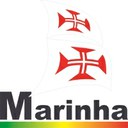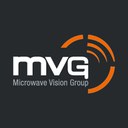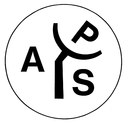Radioplanning and System Level Design towards the Implementation of Context Aware Scenarios (cancelled)
Francisco Falcone
Universidad Publica de Navarra, Spain
 Francisco Falcone (M05, SM09) received his Telecommunications Engineering Degree (1999) and PhD in Communications Engineering (2005), both at the Universidad Pública de Navarra (UPNA) in Spain. From 1999 to 2000 he worked as Microwave Commissioning Engineer at Siemens-Italtel. From 2000 to 2008 he worked as Radio Network Engineer in Telefónica Móviles. In 2009 he co-founded Tafco Metawireless, a spin off devoted to complex EM analysis. From 2003 to 2009 he was also Assistant Lecturer at UPNA, becoming Associate Professor in 2009. His research area is artificial electromagnetic media, complex electromagnetic scenarios and wireless system analysis. He has over 370 contributions in journal and conference publications. He has been recipient of the CST Best Paper Award in 2003 and 2005, Best PhD in 2006 awarded by the Colegio Oficial de Ingenieros de Telecomunicación, Doctorate award 2004-2006 awarded by UPNA, Juan Lopez de Peñalver Young Researcher Award 2010 awarded by the Royal Academy of Engineering of Spain and Premio Talgo 2012 for Technological Innovation.
Francisco Falcone (M05, SM09) received his Telecommunications Engineering Degree (1999) and PhD in Communications Engineering (2005), both at the Universidad Pública de Navarra (UPNA) in Spain. From 1999 to 2000 he worked as Microwave Commissioning Engineer at Siemens-Italtel. From 2000 to 2008 he worked as Radio Network Engineer in Telefónica Móviles. In 2009 he co-founded Tafco Metawireless, a spin off devoted to complex EM analysis. From 2003 to 2009 he was also Assistant Lecturer at UPNA, becoming Associate Professor in 2009. His research area is artificial electromagnetic media, complex electromagnetic scenarios and wireless system analysis. He has over 370 contributions in journal and conference publications. He has been recipient of the CST Best Paper Award in 2003 and 2005, Best PhD in 2006 awarded by the Colegio Oficial de Ingenieros de Telecomunicación, Doctorate award 2004-2006 awarded by UPNA, Juan Lopez de Peñalver Young Researcher Award 2010 awarded by the Royal Academy of Engineering of Spain and Premio Talgo 2012 for Technological Innovation.
Abstract
One of the main challenges we face is to achieve sustainability, higher degree of governance and quality of life. This is the driver in the advancement of Context Aware environments, being Smart Cities a paradigmatic case, due to the relevance in terms of actual overall population and future projection of population, as well as on the multiplicity of systems that monitor and interact. Within this framework, a great deal of research work is underway in the analysis and implementation of coverage/capacity efficient Heterogeneous Networks. The aim of this short course is to provide an overview of design criteria and tools in order to understand the underlying challenges of wireless system interaction and co-existence in HetNet environments (ultra-dense Wireless Sensor Networks (WSN), Interference Management, Coverage-Capacity estimations), which require novel approaches in relation to previous radioplanning/system level design strategies. Complete system level analysis will be provided in order to achieve a holistic approach, with a complete view of 4G/5G and WSN network operation and the different network deployment strategies, from large coverage to femtocell and Device 2 Device scenarios.
The course is structured on the basis of the following content outline, with the aim of providing a holistic view in the System Level analysis of Context Aware Scenarios:
- Introduction to Context Aware Environments: State of the art in the adoption of context aware scenarios and its phase of development in applications such as Smart Cities, Ambient Assisted Living, e-Health/m-Health/s-Health, M2M communications, Vehicular Networks
- HetNet architecture and elements: the fundamental infrastructure is a combination of multiple access networks(3G/4G/5G/WSNs) and a Multiprotocol back bone. A description of the characteristics and limitations and challenges of these networks will be provided. Focus on physical layer and impact of interference/energy consumption will be provided.
- Wireless Channel characterization: estimation of coverage/capacity relations in complex multi system HetNet scenarios will be described. Analysis and simulation methods, from empirical based to deterministic tools will be described, with focus on signal level estimation, interference estimation and capacity constraints. Impact of elements of complex scenarios (vehicular movement/inclusion of persons) will be described, as well as the potential role of multiple antenna systems (2D/3D MIMO, MISO and SISO configurations)
- Radioplanning Analysis and System Level Analysis in complex scenarios: a realistic case study will be developed in the last part of the course, considering restrictions of network equipment and user terminal influence. System Level parameters in terms ofcoverage/capacity and energy consumption will be derived, including modifications in traffic load, overall interference levels and user location.


































